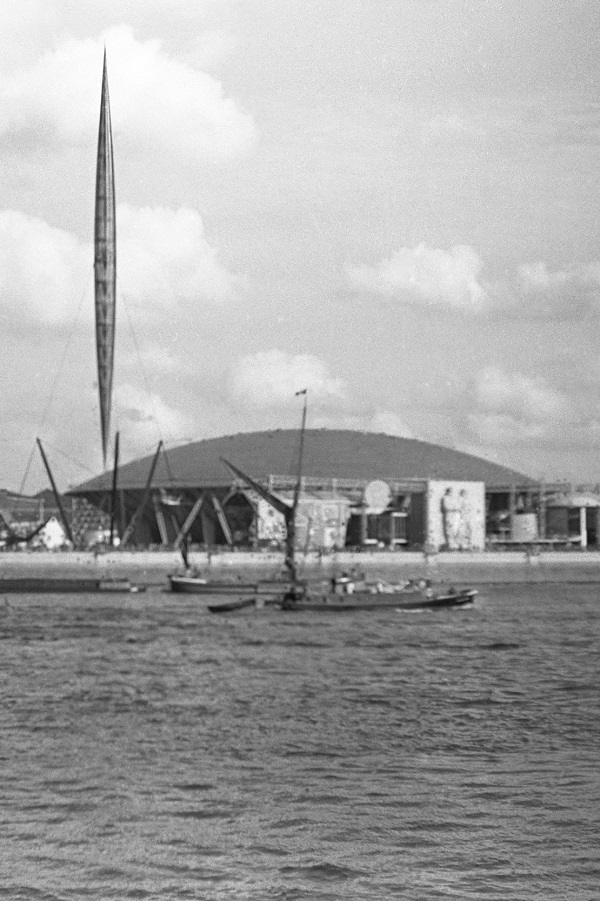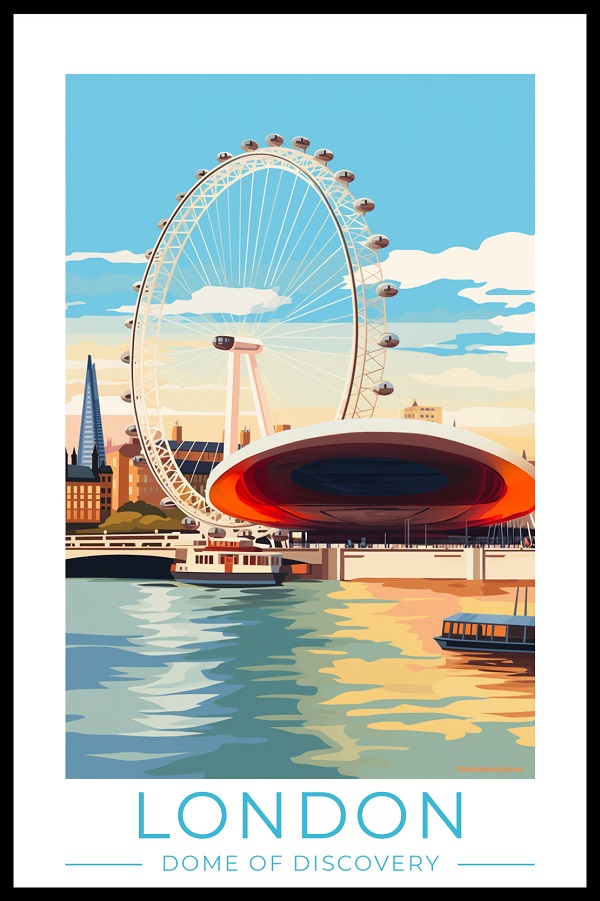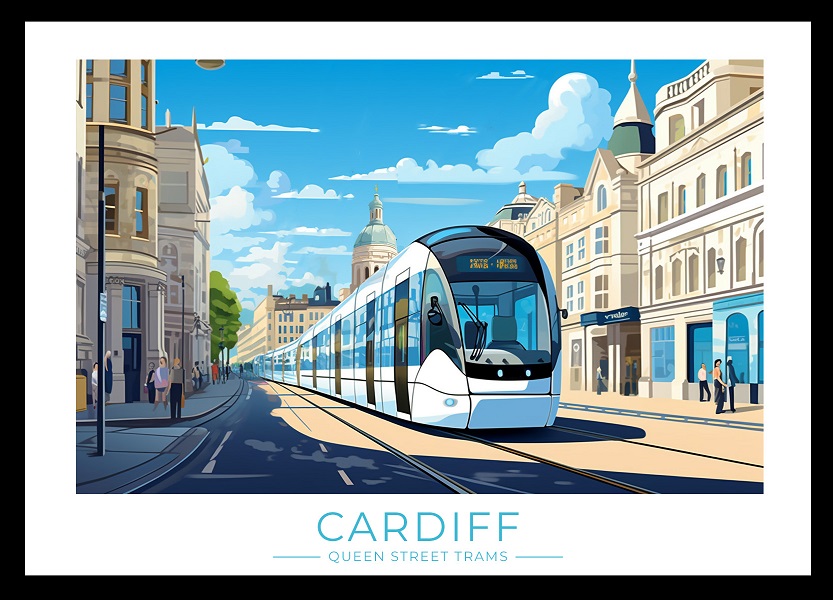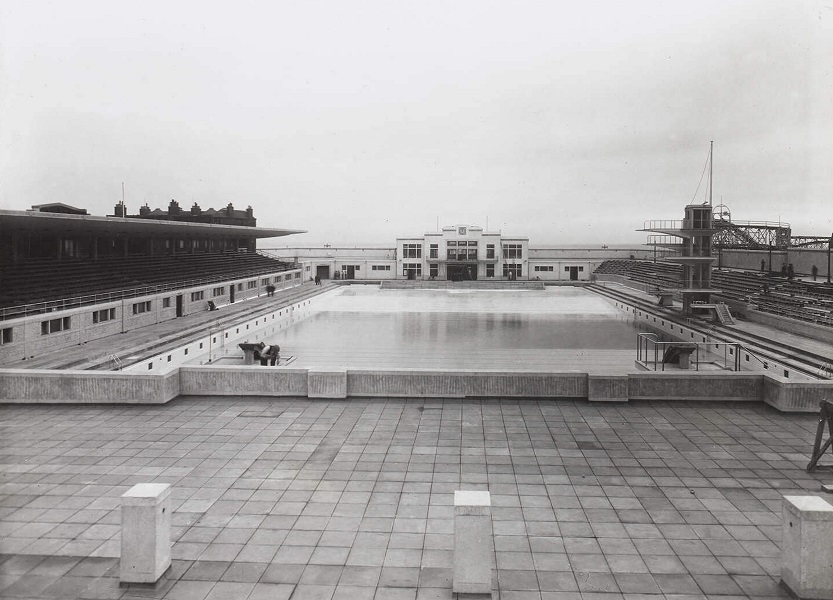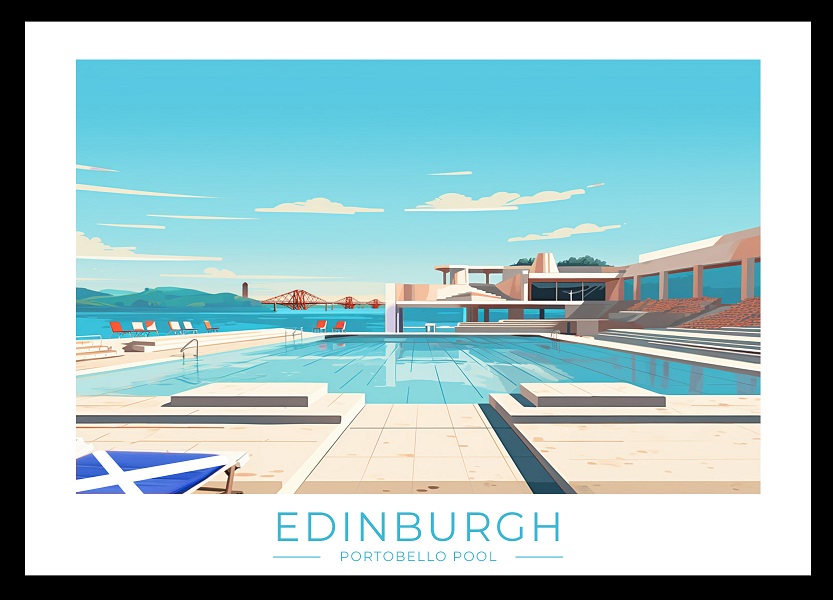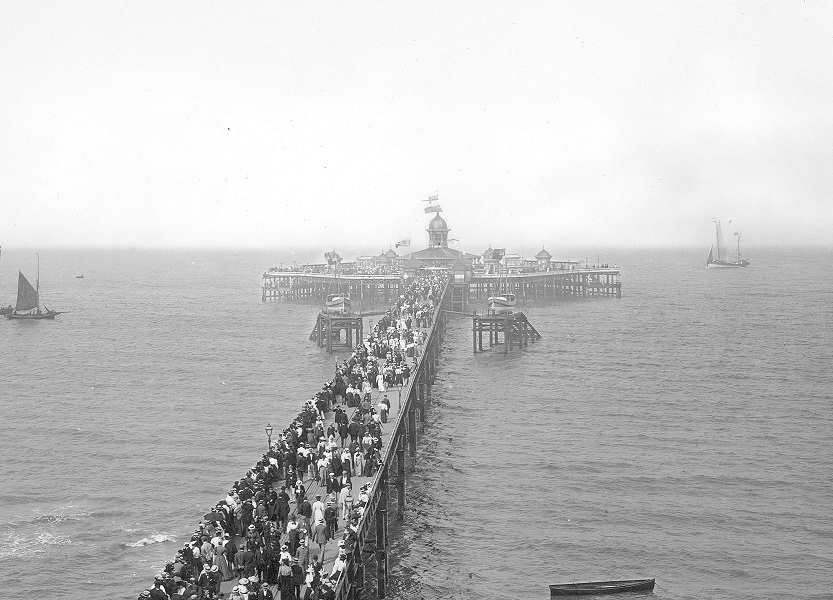The Cities Of Our Past Reimagined
There’s no denying that the UK landscape has changed considerably over the years. Many of the cities and towns we once recognised now offer an entirely different look and feel, with some iconic landmarks and prominent buildings no longer standing.
But what if we were to reimagine these long-lost landmarks? Our latest campaign uses artificial intelligence (AI) to do just that. Using this innovative technology, we’ve taken five notable UK landmarks, redefining what they’d look like today if they still existed within our modern-day society.
Keep reading to rediscover what was once forgotten…
Liverpool Overhead Railway, Liverpool
Opening in 1893, the Liverpool Overhead Railway was originally designed to transport workers to jobs along the docks and waterfront. As the world’s first electrically powered elevated railway, it was quick and reliable, becoming well-known for its impressive functionality.
The rail line stretched from Herculaneum Dock to Seaforth Carriage Shed, passing by some of Liverpool’s iconic landmarks, including the Royal Liver Building and George’s Dock, otherwise known as the Pier Head. The railway became one of the city’s most popular attractions, famed for the impressive views it offered of the River Mersey.
Did you know? The railway adopted its affectionate nickname, ‘The Docker’s Umbrella’, due to the fact it protected those walking underneath it from Liverpool’s at times harsh elements.
Over time however, the railway suffered a significant amount of wear and tear, as well as bomb damage during the 1940s. Shortly after this, it became apparent that the railway would need £2 million worth of repairs. As a result, the Liverpool Overhead Railway Company decided to cease operation.
After 60 years of serving the people of Liverpool, the railway closed on 30th December 1956, with the last two trains running from either end of the line at 10pm. Its closure marked the end of an era, especially for those who held fond memories of taking trips along the waterfront.
But what if the Overhead Railway hadn’t closed and it was still up and running today? Here, we imagine the rail line as though it had undergone a major update, with it now featuring a smooth, wide platform where passengers board and alight. As for the train itself, we expect it would look more reminiscent of the modern commuter train, being similar in style to that of Merseyrail – the rail system serving the Liverpool City Region and surrounding areas of the Wirral, Cheshire and Lancashire.
Dome of Discovery and Skylon, London
Designed by British architect Ralph Tubbs, the Dome of Discovery was constructed as a temporary exhibition building for the Festival of Britain in 1951. Held along the River Thames on London’s South Bank, the festival was planned to encourage people to feel optimistic about Britain in the aftermath of World War II.
With a 365-foot diameter and standing at 93 feet tall, the prefabricated dome was the largest in the world at the time. Given the apt nickname ‘Ralph’s Tub’, the dome was made from concrete and aluminium, and it housed galleries and exhibitions split up into eight different sections including ‘the sea’, ‘the sky’, ‘the land’ and ‘outer space’.
The Dome of Discovery was built next to the Skylon – a sleek, cigar-shaped structure that was also constructed for the Festival of Britain. Designed by architects Philip Powell and John Hidalgo Moya, the structure boasted a height of 93 feet and was supported by cables to give the illusion it hung in the air.
Did you know? The futuristic appearance of the Skylon was based on ideas of what spacecraft would look like according to science fiction writers at the time.
Like the dome, the Skylon soon became a symbolic post-war landmark to many. However, after just 11 months the dome was dismantled and sold for scrap metal. Meanwhile, the prime minister at the time, Winston Churchill, ordered that the Skylon also be taken down. It’s thought that Churchill saw the structure as an unwanted reminder of Clement Attlee’s Labour government, which had lost power earlier in the year.
The area where the dome and Skylon once stood was cleared for reuse, and today it is home to the Jubilee Gardens – but how would the landscape look today? We imagine the dome itself to have been replaced with a more modern yet still curved, futuristic-looking building, overlooking and offering fantastic views of the River Thames. Meanwhile, we see the Skylon having been replaced entirely by the iconic London Eye which stands in its spot today.
Trams on Queen Street, Cardiff
When Cardiff converted from using horse-drawn trams to electrical tramways in 1902, the change was an instant success. The trams ran north to south, stretching from Pier Head to Mynachdy Road, as well as west to east from Victoria Park to Roath Depot, transporting residents throughout the city.
Although the system remained in good condition throughout the years, the effects of World War I took its toll on the tramways, causing damages and staff shortages. Fortunately, the lines were soon restored and put back to use.
Despite the introduction of buses in 1920, the city’s tramway still proved to be the most popular mode of transport among locals. The tram lines even received a large investment to extend the tram tracks, followed by a complete modernisation of the system.
However, changes within Cardiff Corporation Transport and the supported rise of buses meant the planned extension was put on hold, with the first tramway being closed in January 1930. This was followed by the closure of a second tramway in 1936.
The remaining tramways continued to run throughout World War II. However, maintenance issues and further staff shortages meant the tramways broke down to the point where they were eventually scrapped altogether in 1950. The very last time the tram made its journey around the city on the Whitchurch Road route was in February of that year, bringing 50 years of the Cardiff tramways to a close.
Did you know? A poem was inscribed on the outside of the last running tram – a nod to the mourning of the loss of this iconic mode of transport.
With plans in place to reintroduce a tramline service in Cardiff by 2024, it’s interesting to think what the original tramway system would look like today had it not been abolished all those years ago. We picture a much more modern-looking tram, featuring a sleek, streamlined appearance with large glass windows and a digital LED sign to advise passengers of the tram’s destination.
Portobello Pool, Edinburgh
Portobello pool was one of Edinburgh’s most popular attractions for over 40 years, enticing visitors from across the UK with its attractive art deco design, high diving boards and outdoor heated pool. The bathing pool was opened to the public by Scottish property agent Lord Provost Sir Louis Stewart Gumley on 30th May 1936 with a capacity large enough to accommodate 1,300 bathers and 6,000 seated spectators. Despite torrential rain, 10,000 people visited the pool on its opening day, with queues stretching the length of Westbank Street.
During its first open season, Portobello Pool brought in an impressive 290,000 bathers and approximately 500,000 spectators. It soon became the perfect day out for families, especially since its heated water allowed the pool to be open from May to September every year. But it wasn’t just local residents and holiday makers that took advantage of the pool and its integrated wave pool – the Royal Navy were known for sending troops to the pool to test out the effectiveness of their sea sickness tablets.
Did you know? The pool’s artificial wave could generate waves as high as three feet, in three different directions.
When World War II broke out in 1939, the pool was camouflaged so that it appeared as a field from above to prevent it from being used as a target. Fortunately, it was able to reopen in June 1946, with visitors soon flocking back to enjoy the pool with friends and family.
The pool went on to be the host of various galas and diving shows which saw visitor numbers soar. However, popularity started to dwindle during the 1970s when people took more interest in cheap package holidays abroad. The pool took a further blow when the power station responsible for heating the pool closed in 1978, meaning the water could no longer be warmed.
In 1978, Portobello bathing pool was closed for the final time before being demolished the following year. Today, you’ll find a leisure centre and five-a-side football pitch in its place – but what would the area look like if the pool hadn’t closed its doors? We imagine a pool reminiscent of the original, featuring characteristics reflecting its Art Deco charm including clean, straight lines and geometric design.
Margate Jetty, Kent
Constructed by the Margate Pier Harbour Company in 1824, Margate Jetty was originally built out of wood. Locals would refer to the jetty as the Jarvis Landing Stage, with its primary use being to ships to load and unload passengers when the harbour was too difficult to access during low tide.
The wooden jetty required frequent repair over the years due to damage. So much so that in 1851, it sustained severe damage in two places, resulting in an iron jetty being designed and built in its place. It opened back up in 1855, although work continued until its completion two years later.
Did you know? Margate Jetty became the first iron seaside pier in the world.
A pavilion was built on the pier in 1858 and used as a station building for the arrival and departures of steamships. It was then extended further to include its distinctive octagonal-shaped pierhead.
The pier was damaged again in January 1877 when a storm caused a shipwreck to cut through the jetty. This resulted in around 50 people becoming trapped until they were rescued the following day. The jetty then took another blow later that same year when it was struck by a passing vessel, causing yet more damage to its structure.
Aside from repairs, many changes were made to the pier over the years, including an entertainment pavilion at the pier head, as well as a building and slipway to allow for the relocation of the Royal National Lifeboat Institution Margate Lifeboat Station.
The pier was also used as part of the Dunkirk evacuation in 1940 to evacuate members of the British and French armies. Shortly after the war, the pier reverted back to being used as a steamship jetty. However, after suffering fire damage in 1964, concerns were raised over the jetty’s safety in the years that followed. In 1976, it was decided that Margate Jetty would be closed for good.
Margate Jetty was eventually demolished in 1998 – but what if it was still standing today? We think the extended jetty would much remain the same, leading up to a pier head comparable with the original. However, our vision includes a more modern-looking building at the pier head, perhaps on multiple levels offering views of the waters surrounding it.
AI gives us the opportunity to look towards the future while we take a trip down memory lane. Which of our reimagined landmarks of tomorrow do you think are the most reminiscent of the past? Share your thoughts using #VisionsOfTomorrowUK.
To celebrate these beautiful UK landmarks, Chums are offering one lucky winner a chance to win a beautifully framed set of all five AI posters featured above. Plus, five lucky runners-up will receive a framed postcard! Tap the link to enter this fantastic competition. The competition now closes on Monday 8th January 2024 at midday.
Good Luck!
Copyright © 2026 Chums
PayPal Representative Example:
Representative 23.9% APR (variable) Purchase interest rate 23.9% p.a. (variable) Assumed Credit limit £1,200. PayPal Credit and PayPal Pay in 3 are trading names of PayPal UK Ltd, 5 Fleet Place, London, United Kingdom, EC4M 7RD. Terms and conditions apply. Credit subject to status, UK residents only, Chums Ltd acts as a broker and offers finance from a restricted range of finance providers. PayPal Pay in 3 is not regulated by the Financial Conduct Authority. Pay in 3 eligibility is subject to status and approval. 18+. UK residents only. Pay in 3 is a form of credit. Check if affordable and how you will repay. May make other borrowing more difficult or expensive. See product terms for more details.




